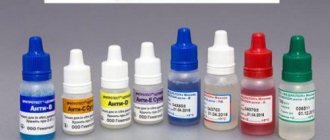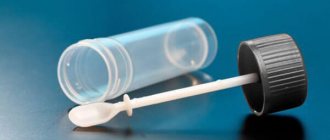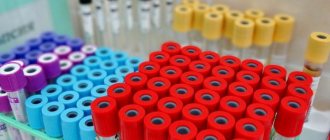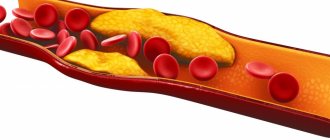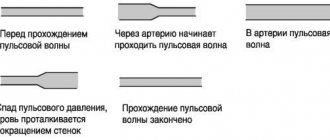Very often the current or voltage in a circuit is much higher than the permissible value that a measuring device (voltmeter, ammeter or other) can measure.
In such cases, such parameters can be measured by adding special additional elements to the electrical circuit. The article will give a detailed explanation of what additional resistance is and why it is needed. A description and purpose of shunt devices will also be given, as well as the formulas used to calculate the parameters of such elements.
What is a shunt
In electronics and electrical engineering you can often hear the words “shunt”, “shunting”, “bypass”.
The word “shunt” came to us from the bourgeois language: shunt - literally translated as “branch”, “transfer to a siding”. Therefore, a shunt in electronics is something that “adjacent” to an electrical circuit and “transmits” the electrical current in a different direction. Well, now it’s easier). In essence, a shunt is a simple resistor that has a low resistance, in other words, a low-resistance resistor. And no matter how strange it may sound: a shunt is the simplest current-to-voltage converter. But how is this possible? Yes, it turns out everything is simple!
Indications for surgery
Bypass surgery of the affected heart vessels is performed for arterial stenosis causing ischemia. The most common cause is atherosclerosis, when the lumen of the arteries is blocked by atherosclerotic plaques, or thrombosis.
These pathologies are the main indications for surgical intervention. Additional examination is carried out when:
- retrosternal pain radiating to the left arm, shoulder, lower jaw, neck;
- hypertension;
- tachycardia; constant nausea, heartburn.
How does a shunt work?
So, we have a simple shunt. By the way, in the diagrams it is designated as a resistor. And this is not surprising, because this is a low-resistance resistor.
Let's agree to assume that our current is constant and flows from point A to point B. On its way it meets a shunt and flows through it almost unhindered, since the resistance of the shunt is very small. Do not forget that electric current is characterized by such parameters as Current Strength and Voltage. Electric current flows through the shunt with some force (I), depending on the load of the circuit.
Remember Ohm's Law for a section of an electrical circuit? Here it is:
Where
U - voltage
I - current strength
R - resistance
Our shunt resistance is always constant and does not change, simply put, “constant”. We can find out the voltage drop across the shunt by measuring it with a voltmeter as in the figure:
So, based on the formula
we get the formula:
and we draw a terribly simple conclusion: the readings on the voltmeter will be greater, the greater the current flowing through the shunt.
So what does this mean? This means that we can easily calculate the current flowing through the AB wire ;-). Everything ingenious is simple! And the most wonderful thing is, you know what? We don't even need to use an ammeter ;-).
This is the principle of operation of the shunt. And most often this principle is used precisely to expand the measurement limits of measuring instruments.
Contraindications
CABG surgery is not performed in the following cases:
- with renal failure;
- uncompensated diabetes mellitus;
- chronic nonspecific lung lesions;
- malignant neoplasms;
- post-stroke hypertension.
There are also relative contraindications for bypass surgery:
- heart failure;
- obesity;
- scarring of the heart, minimizing cardiac blood output below 30%;
- Menkenberg's arteriosclerosis - damage to all coronary arteries;
- elderly age.
AMI is considered as a contraindication at the discretion of the physician.
Types of shunts
Industrial ammeters look like this:
In fact, no matter how strange it may sound, these are voltmeters. It’s just that their scale is drawn (graduated) with calculations according to Ohm’s law. In short, it shows the voltage, and the count is in Amperes ;-).
On one of them you can see the measurement limit even up to 100 Amperes. What do you think, if you put such a device in an open circuit and pass a current of, say, 90 Amps, will the thin wire of the measuring coil inside the ammeter withstand it? I think there will be white thick smoke). Therefore, such measurements are carried out only through shunts.
And here, in fact, are industrial shunts:
Those on the bottom right can pass through themselves a current of up to a kiloampere or more.
Each industrial ammeter comes with its own shunt. To start using an ammeter, it is enough to assemble a shunt with an ammeter according to this diagram:
In some ammeters, this shunt is built directly into the body of the device itself.
Preparing for the intervention
The basis of preparation for CABG surgery is coronary angiography, a procedure that thoroughly examines the relief of the coronary endothelium. To carry it out and subsequent detailed examination, the patient is hospitalized in a hospital. To perform coronary angiography, special catheters are inserted into the left and right coronary arteries, through which X-ray contrast is applied. X-rays then scan the endothelium. The procedure allows you to accurately determine the location and degree of narrowing of the vessel, while the patient receives a high dose of radiation. In addition, the manipulation cannot be performed if there is an allergy to iodine (x-ray contrast).
Therefore, in addition to coronary angiography, CT coronary angiography is used. It is more accurate, more expensive, but eliminates radiation exposure. True, contrast is still necessary, and a person weighing more than 120 kg cannot fit into the device.
If the examination reveals narrowing of the arteries by more than 75%, CABG is prescribed to minimize the risk of AMI or its recurrence. In addition to coronary angiography, the following are required: CBC, OAM, general biochemistry, coagulogram, lipidogram, ECG, EchoCG, ultrasound of the abdominal organs.
If the patient takes anticoagulants, their use is agreed with the doctor: usually a break is taken for two weeks before surgery. Other groups of pharmacological agents also require consultation with a doctor.
The day before coronary artery bypass surgery, the patient is examined by an anesthesiologist, correlating anesthesia with the height, weight, age of the person being operated on, and individual intolerance to drugs. On the eve of the intervention, the patient is sedated (taken sedatives). Necessarily:
- do not eat after 18:00;
- do not drink after midnight;
- prescribed medications are taken immediately after dinner;
- in the evening - shower.
Shunt operation using a practical example
Our guest is the most ordinary industrial shunt for an ammeter:
On the back you can read its markings:
How to read the characteristics of such markings? Everything is simple here! This means that if the current flowing through the shunt is 20 Amps, then the voltage drop across the shunt will be 75 millivolts.
0.5 is an accuracy class. That is, how much we measured - this value will have an error of 0.5% of the measured value. That is, let's say we measured a voltage drop of 50 millivolts. The measurement error will be 50 plus or minus 0.25. Such accuracy is quite enough for industrial and radio-electronic needs ;-).
So, we have a simple 12-volt car light bulb:
We set the voltage on the Power Supply to 12 Volts, and connect our light bulb. The light bulb lights up and we immediately see how much current it consumes, thanks to the built-in ammeter in the power supply. Our lamp is 1.7 Ampere.
Let's assume we don't have a built-in ammeter in the power supply, but we need to know how much current passes through the light bulb. To do this, we put together a simple diagram:
And we measure the voltage drop on the shunt itself. The result was 6.3 millivolts.
Since we know that at 20 Amps the voltage across the shunt will be 75 millivolts, how much current will flow through the shunt if the voltage drop across it is 6.3 millivolts? We remember the mathematics teacher Maryivanna and solve a simple proportion for the 5th grade 
Do we remember what our power supply showed?
Error of 0.02 Ampere! I think this can be attributed to instrument error).
Since radio amateurs mostly use low voltage and current in their electronic gadgets, you can apply this principle to your designs. To do this, it will be enough to take a low-resistance resistor and use it as a current sensor). As they say, “the need for invention is cunning” 
What is a shunt in electronics and a video about it:
Complications
Often after surgery, the patient experiences a feeling of pain, heat, and discomfort in the chest. This is not a reason to panic; you need to inform your doctor about this, who will prescribe relief medications. The most common complications after cardiac bypass surgery are: pulmonary congestion, anemia, pericarditis and other inflammatory processes, phlebitis of veins adjacent to the shunt, immune disorders (during cardiac arrest), arrhythmias.
To prevent congestion in the lungs, it is recommended to inflate balloons up to 20 times a day. Anemia can be controlled with a special diet and, if necessary, with blood transfusions. Treatment of other complications is individual for each patient.
Links[edit]
- Rudolph F. Graf, Modern Dictionary of Electronics
, Mc-GrowHill, 1968 Library of Congress 68-13873
shunt
page 454. - Mattei, Young, Jones Microwave Filters, Impedance Matching Networks, and Coupling Structures
, p66, McGraw-Hill 1964 - ^ab Electrical Tools Manual
, General Electric, 1949, pages 8–9. - Terrell Croft, The American Electrical Worker's Manual
, McGraw-Hill, 1948. 70 - ↑
R. Dzyuba; N. B. Beletsky; J. F. Mayo-Wells. "Stability of Double-Wall Manganin Resistors" (PDF). In David R. Lead (ed.). A Century of Excellence in Measurement, Standards, and Technology: A Chronicle of Selected NBS/NIST Publications 1901–2000. pp. 63–65. CiteSeerX 10.1.1.208.9878. DOI: 10.6028/NIST.SP.958. NIST SP 958. Ten of these served exclusively as the US impedance standard from 1939 until they were superseded by the Quantized Hall Effect (QHE) in 1990.
Faulty device bypass[edit]
One example is miniature Christmas lights that are connected in series. When the filament in one of the incandescent lamps burns out, full line voltage appears across the burned out lamp. The shunt resistor, which was connected in parallel to the filament before it burned out, will then short-circuit to bypass the burned filament and allow the rest of the filament to ignite. However, if too many tubes burn out, the shunt will also burn out, requiring the use of a multimeter to determine the point of failure.
Use of electronic filters in circuits[edit]
The term shunt is used in filters and similar ladder circuits to refer to the components connected between line and common. The term is used in this context to distinguish shunt components connected between the signal and return lines from components connected in series along the signal line. More generally, the term shunt can be used for a component connected in parallel with another. For example, a shunt m derivative of half a section
is the common filter section from the impedance image of the filter design method. [2]
Lifestyle recommendations after surgery
Coronary bypass surgery is a reliable way to prevent heart attacks and angina attacks, since it eliminates ischemia for decades. However, the shunt can narrow; in every fifth patient this happens after a year, and after 10 years - in 100%. To minimize this possibility, you should adhere to seven rules:
- complete cessation of alcohol and cigarettes;
- anti-atherogenic nutritional profile (DASH diet included);
- movement: exercise therapy, walking, sports (swimming);
- minimizing stress;
- a balanced drinking diet (30 ml of water per 1 kg of weight);
- eight hours sleep;
- annual medical examination.


